Lectrosonics DSQD Handleiding
Lectrosonics
Receiver
DSQD
Bekijk gratis de handleiding van Lectrosonics DSQD (24 pagina’s), behorend tot de categorie Receiver. Deze gids werd als nuttig beoordeeld door 28 mensen en kreeg gemiddeld 4.4 sterren uit 14.5 reviews. Heb je een vraag over Lectrosonics DSQD of wil je andere gebruikers van dit product iets vragen? Stel een vraag
Pagina 1/24

DSQD
4 Channel Digital Receiver
INSTRUCTION MANUAL
Rio Rancho, NM, USA
www.lectrosonics.com
Fill in for your records:
Serial Number:
Purchase Date:

DSQD Manual
LECTROSONICS, INC.
2
Introduction
The latest digital radio technology is employed in the
DSQD receiver to set a new standard for performance
and flexibility. Four discrete audio channels are packed
into a single half-rack chassis, with balanced analog
and Dante® digital network outputs. The receiver tunes
continuously across the UHF band from 470.100 to
614.375 MHz.
The digital architecture delivers studio quality audio with
ultra-low latency. The receiver includes an extended
operating range rivaling the best analog and Digital
Hybrid Wireless® systems with tracking filters that stay
centered on the selected frequency.
The DSQD is also backward compatible with any Digital
Hybrid Wireless® transmitters including the SM Series,
LT, HM Series, SSM, HH Series, UM400, UM400a, LM
Series, MM Series, and WM.
The receiver provides a USB port for firmware up-
dates, an IR port for fast setup and an ethernet port for
control. A large, high resolution, backlit LCD and large
membrane switches provide an intuitive interface that is
highly visible in daylight or dimly lit conditions.
Wireless Designer™ software integrates the digital and
Digital Hybrid Wireless® into a single control panel with
site scanning and frequency coordination. The software
is free and can be used while connected to equipment
or offline in planning a multi-channel system.
Antenna ports on the rear panel accept input from
remote antennas, with a “loop-thru” output to another
mainframe using the internal multicoupler. A kit is also
available to mount antenna inputs (BNC connectors) on
the front panel.
General Technical
Description
Encryption
When transmitting audio, there are situations where
privacy is essential, such as during professional sport-
ing events, in court rooms or private meetings. For
instances where your audio transmission needs to be
kept secure, without sacrificing audio quality, Lectroson-
ics implements AES256 encryption in our digital wire-
less microphone systems. High entropy encryption keys
are first created by the DSQD Receiver. The key is then
synced with an encryption-capable digital transmitter,
via the IR port. The audio will be encrypted and can
only be decoded if both DSQD and transmitter have the
matching encryption key. If you are trying to transmit
an audio signal and keys do not match, all that will be
heard is silence.
Table of Contents
Introduction 2 ...........................................................................
General Technical Description ............................................ 2
Encryption 2 ............................................................................
Digital Hybrid Wireless® Technology .................................... 3
LCD Screen 3 .........................................................................
Diversity Reception 3 ..............................................................
Infrared Sync 3 ........................................................................
What is Dante? 3 ....................................................................
Panels and Features 4 ..............................................................
DSQD Front Panel 4 ...............................................................
DSQD Rear Panel 4 ................................................................
IR (infrared) Port 5 ..................................................................
USB Port 5 ..............................................................................
Headphone Volume Adjustment ........................................... 5
Channel Selector Buttons 5 ....................................................
Dante Ports (if Dante module is installed) 5 ............................
Ethernet Port 5 ........................................................................
Multi-Frame Communication 5 ................................................
Power Inlet 5 ...........................................................................
LCD Menu Map 6 .......................................................................
Navigating the Menus 8 ...........................................................
RF Setup Menu 8 ......................................................................
RF Frequency 8 ......................................................................
Frequency Scan 8 ...................................................................
Group Tune .......................................................................... 9
Group Tune Setup ................................................................ 9
Diversity Setup 10 .....................................................................
Audio Setup Menu 12 .................................................................
Audio Level 12 ..........................................................................
Audio Polarity 12 .......................................................................
Smart Noise Reduction 12 ........................................................
Compatibility Modes 12 .............................................................
Talkback Setup 12 .....................................................................
IR Sync & Encryption Menu 13 ..................................................
Encryption Key Management 13 ...............................................
Encryption Keys 13 ...................................................................
Sync Settings 13 .......................................................................
Tools and Settings Menu 14 ......................................................
RX On/Off 14 ............................................................................
TX Battery Type ................................................................... 14
Front Panel Setup 14 ................................................................
Antenna Bias Power 14 .............................................................
Network Settings 14 .................................................................
Edit Names 15 ..........................................................................
Restore Defaults 15 ..................................................................
Pilot Tone Bypass ................................................................. 15
About 15 ....................................................................................
Links 15 .....................................................................................
Specifications and Features 15 .................................................
Wireless Designer 15 .................................................................
Firmware Update Instructions 15 ..............................................
Supplied Hardware 16 ................................................................
Unpacking the Unit 16 ...............................................................
Items Included in the Box: .................................................... 16
Optional Accessories 17 ............................................................
Installing two DSQD Receivers into a SingleRack Space 18 ..
Service and Repair 20 ................................................................
Returning Units for Repair 20 ...................................................

Digital Receiver
Rio Rancho, NM 3
Digital Hybrid Wireless® Technology
All wireless links suffer from channel noise to some de-
gree, and all wireless microphone systems seek to mini-
mize the impact of that noise on the desired signal. Con-
ventional analog systems use compandors for enhanced
dynamic range, at the cost of subtle artifacts (known as
“pumping” and “breathing”). Wholly digital systems defeat
the noise by sending the audio information in digital form.
To support the installed base of Digital Hybrid Wireless
systems, the DSQD receiver includes DSP algorithms
for compatibility with Digital Hybrid Transmitters.
The DSQD receiver uses a DSP generated ultrasonic
pilot tone to reliably mute the audio when no RF carrier
is present. The pilot tone must be present in conjunc-
tion with a usable RF signal before the audio output
will be enabled. 256 pilot tone frequencies are used
across each 25.6 MHz block within the tuning range of
the system. This alleviates erroneous squelch activity in
multichannel systems where a pilot tone signal can ap-
pear in the wrong receiver via IM (intermodulation).
LCD Screen
Easy navigation of all setup parameters is provided by a
full color, backlit LCD screen and membrane push but-
tons. The high resolution display provides comprehen-
sive monitoring of all receiver parameters.
Diversity Reception
Three different receiver diversity schemes can be
employed depending on the needs of the application,
including antenna switching (during packet headers
for seamless audio), Digital Ratio Diversity, or Digital
Frequency Diversity.
Infrared Sync
The DSQD has a bi-directional IrDA interface which
allows quick syncing of settings and encryption keys
to transmitters (including legacy transmitters) with the
push of a button. The receiver also offers tuning groups
to allow the user to set up a list of frequencies, allowing
for easy tracking of frequency tuning in the transmitters.
What is Dante?
Audinate’s patent pending Dante™ technology is a
flexible Internet Protocol (IP) and Ethernet based digital
AV network technology that eliminates the many bulky
cables needed to provide point-to-point wiring for ana-
log AV installations.
With Dante, existing infrastructure can be used for high
performance audio as well as for ordinary control, moni-
toring or business data traffic. Digital networks utilize
standard IP over Ethernet offering high bandwidth ca-
pable of transporting hundreds of high quality channels
over Gigabit Ethernet.
Set-up and configuring the system is made easy as
well, saving enormous installation costs and long term
cost of ownership on a digital network. The physical
connecting point is irrelevant: audio signals can be
made available anywhere and everywhere. Patching
and routing now become logical functions configured in
software, not via physical wired links.
Summary of Dante Benefits
• Plug-and-play technology – automatic discovery
and simple signal routing
• Reduced Cost & Complexity- No special skills
required to set up audio networking
• Sample accurate playback synchronization
• Add/remove/rearrange components at will
• Deterministic latency throughout the network
• Support mixed bit depths and mixed sample
rates over one network
• Scalable, flexible network topology, supporting a
large number of senders and receivers
• Supports 1Gbps networks
• Supports a single integrated network for audio,
video, control, monitoring
• Uses inexpensive, off-the-shelf computer
networking equipment
Product specificaties
| Merk: | Lectrosonics |
| Categorie: | Receiver |
| Model: | DSQD |
Heb je hulp nodig?
Als je hulp nodig hebt met Lectrosonics DSQD stel dan hieronder een vraag en andere gebruikers zullen je antwoorden
Handleiding Receiver Lectrosonics

27 Februari 2025
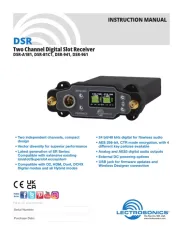
26 Februari 2025
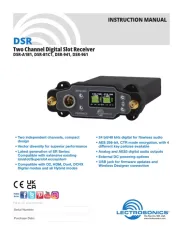
26 Februari 2025
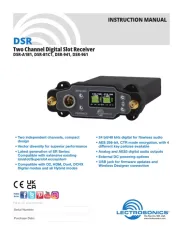
26 Februari 2025
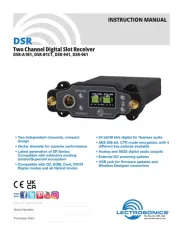
26 Februari 2025

16 November 2023

16 November 2023

16 November 2023

16 November 2023

16 November 2023
Handleiding Receiver
- SRS
- Hegel
- AVMATRIX
- Ibanez
- Trace Elliot
- Audio-Technica
- Toa
- August
- Iriver
- Lindy
- Ground Zero
- QTX
- Musical Fidelity
- Audiotec Fischer
- IFM
Nieuwste handleidingen voor Receiver
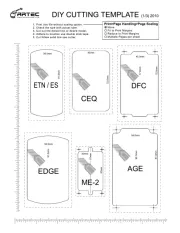
30 Juli 2025
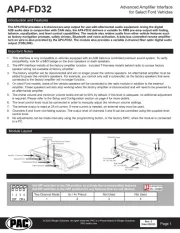
29 Juli 2025
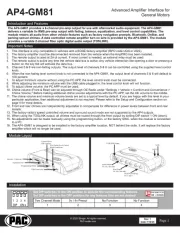
29 Juli 2025
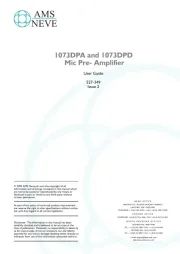
29 Juli 2025
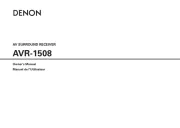
29 Juli 2025
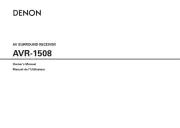
29 Juli 2025
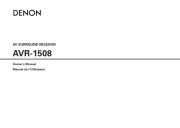
29 Juli 2025
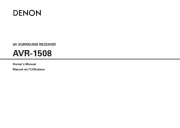
29 Juli 2025
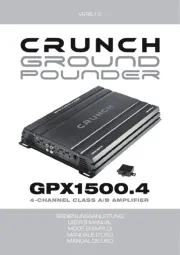
29 Juli 2025
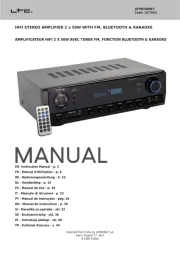
28 Juli 2025